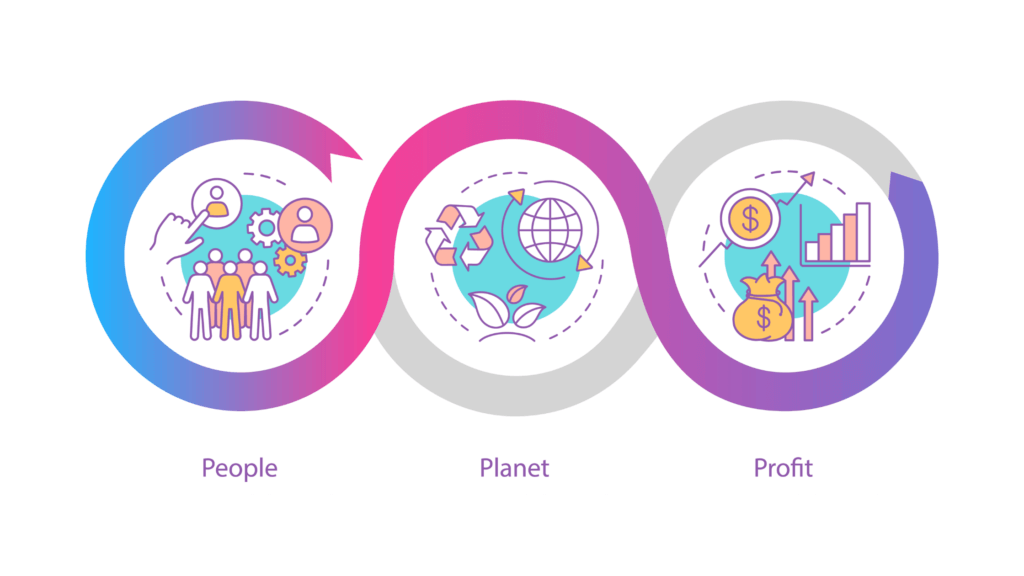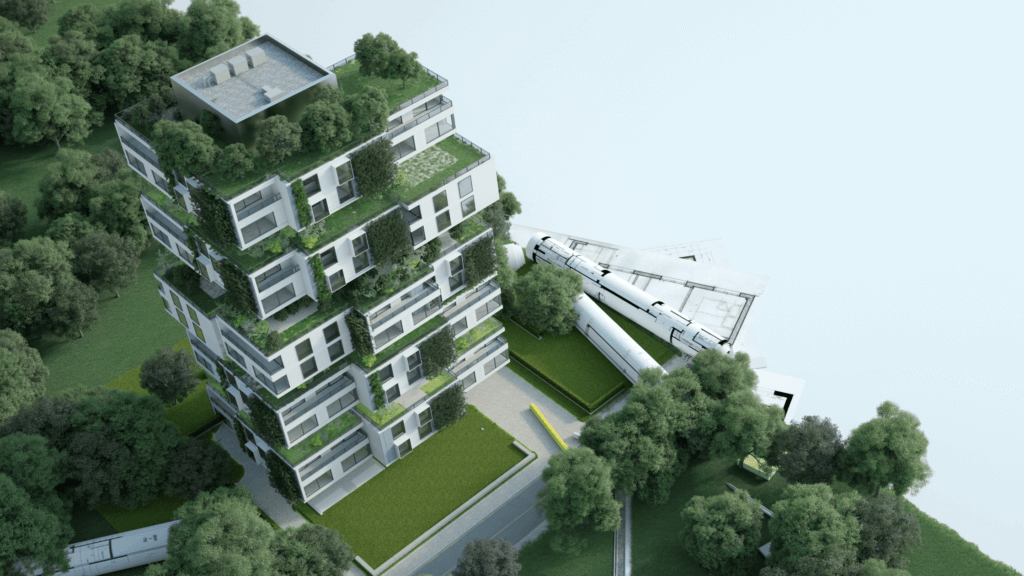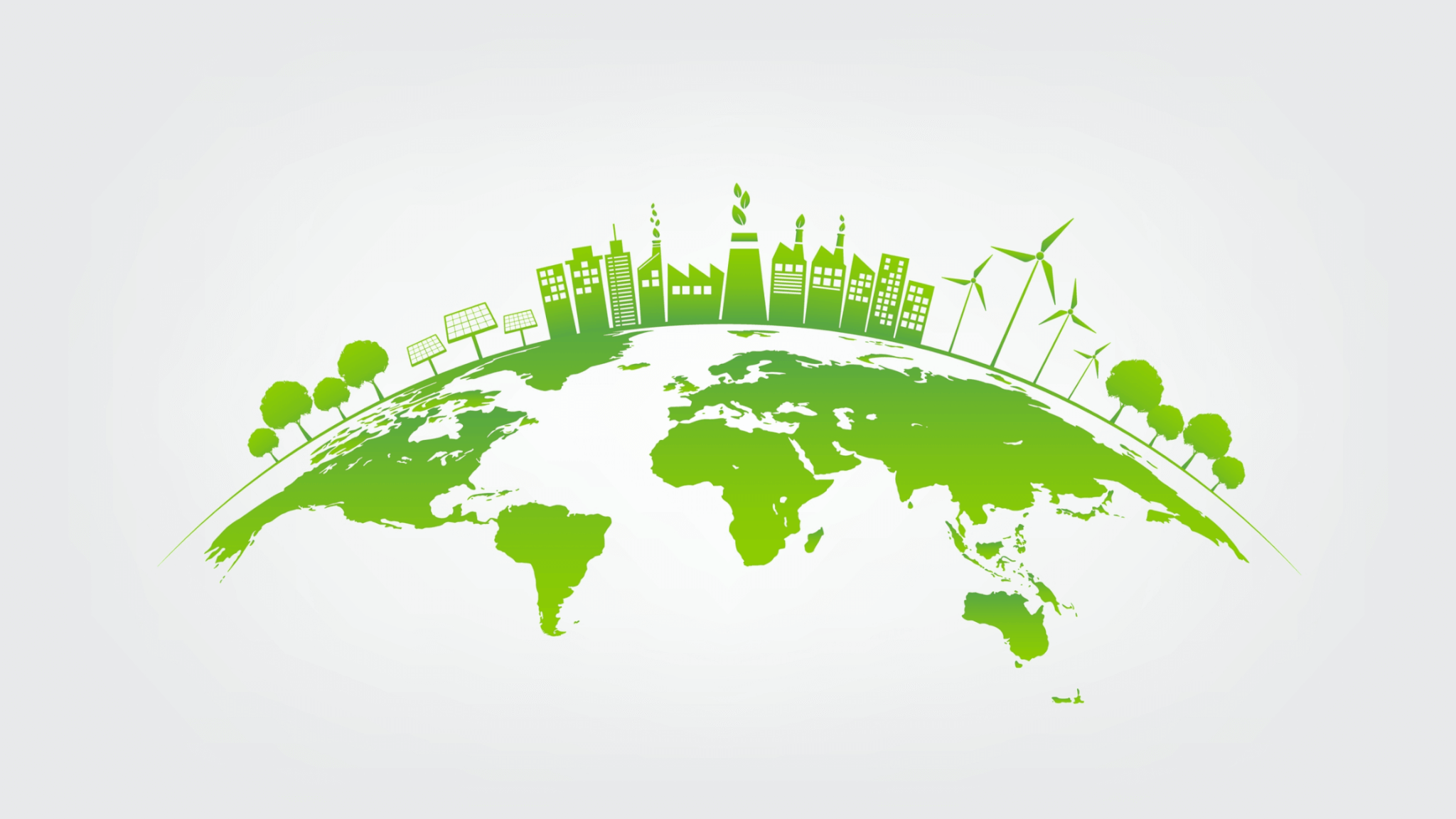The construction industry has been laser-focused on profitability for years, often sidelining projects’ impact on communities and the environment. However, as sustainability and social equity become critical drivers of success, more companies are embracing a broader framework that balances financial goals with the well-being of people and the planet. This shift, coined the “triple bottom line,” is transforming how the architecture, engineering, and construction (AEC) sectors approach growth and legacy.
Quick looks:
- The construction industry is adopting the “triple bottom line” (TBL) framework, balancing profit with social equity and environmental responsibility to redefine success.
- TBL promotes practices like using green materials, setting carbon-neutral goals, and fostering community well-being, aligning with ESG principles and stakeholder capitalism.
- While TBL enhances community relationships, employee satisfaction, and long-term profits, companies face hurdles like short-term cost pressures, inconsistent regulations, and stakeholder resistance.
- Through sustainable projects and innovations, construction firms are setting benchmarks, influencing global industries, and proving that people, planet, and profit coexist.
What is the triple bottom line?

The triple bottom line (TBL) is a framework that reimagines success by balancing three interconnected pillars: people, planet, and profit. Coined by business sustainability expert John Elkington in 1994, the concept challenges companies to evaluate their economic, social, and environmental impact. Instead of focusing solely on financial gains, TBL encourages businesses to take a more holistic approach, ensuring their practices benefit society and the environment alongside their bottom line.
For construction professionals, adopting this mindset means building for today and designing legacies that benefit future generations. This could mean prioritizing worker safety, using sustainable building materials, or creating designs that foster community well-being.
TBL also aligns with the principles of stakeholder capitalism, where the interests of everyone impacted by a business—employees, communities, and the planet—are given as much weight as shareholder returns. For construction companies, this alignment offers an opportunity to build stronger relationships with clients, communities, and regulators, all while driving innovation and staying competitive in an industry increasingly defined by sustainability.
Why companies are shifting gears
The construction industry is at a crossroads. With growing pressure from consumers, investors, and regulatory bodies, companies are being asked to do more than just deliver projects on time and within budget—they’re being asked to build responsibly. This shift is driven by a surge in demand for sustainable practices and a growing recognition that social equity and environmental responsibility are no longer “nice-to-haves.”
Clients and communities now prioritize construction partners who take sustainability seriously, whether it’s reducing carbon emissions (construction is responsible for nearly 40% of global carbon emissions) on-site or designing buildings with net-zero energy goals. Investors are following suit, favoring companies that demonstrate a commitment to environmental, social, and governance (ESG) standards. This demand isn’t just about saving the planet; it’s about future-proofing businesses in an industry reshaped by climate concerns and resource scarcity.
The long-term benefits of embracing these changes are becoming apparent for construction firms. Projects prioritizing sustainability often foster stronger community relationships, attract top talent who want to work for purpose-driven companies, and create lasting brand loyalty among clients. Internally, prioritizing equity and environmental responsibility leads to higher employee satisfaction, reduced turnover, and cost savings through energy efficiency and waste reduction.
The architecture of a TBL business
People: It is essential to prioritize fair wages, diversity, equity, and inclusion (DEI) initiatives, and active community engagement. For instance, Suffolk Construction, a prominent U.S.-based construction firm, exemplifies the integration of TBL by actively engaging in community initiatives. The company emphasizes volunteering, financial support, and providing opportunities for local residents, demonstrating a commitment to people, the planet, and profit.
Planet: Setting carbon-neutral goals, reducing waste, and embracing green innovations are critical. NBCC (India) Limited has adopted sustainable construction practices by incorporating features like rainwater harvesting and solar energy into their projects, demonstrating a commitment to environmental responsibility.
Profit: Reinvesting profits into social and environmental projects ensures long-term sustainability. Cemex, a global building materials company, has developed educational and social responsibility initiatives, such as the “Patrimonio Hoy” program, which helps low-income families achieve homeownership. This program provides access to building materials, microfinancing, and technical assistance, enabling families to construct or improve their homes. As of December 2022, Patrimonio Hoy has benefited 650,000 families, representing over 3 million people.
How construction is leading the TBL revolution

Construction has emerged as a powerful force in TBL practices, pushing boundaries with sustainable designs and environmentally conscious practices. By adopting frameworks like LEED certification and integrating innovative technologies, architecture and construction firms are not just building structures—they’re reshaping cultural attitudes toward sustainability and social responsibility.
Sustainable design
Modern construction projects prioritize designs that reduce environmental impact while enhancing functionality and aesthetics. Firms are finding creative ways to minimize carbon footprints, from energy-efficient buildings to passive design strategies. For example, the Bullitt Center, often called the greenest commercial building in the world, sets a benchmark for sustainable construction by generating energy, managing water on site, and using locally sourced materials.
Sustainable materials
Incorporating sustainable materials is a crucial strategy for construction firms aligning with TBL principles. These materials often have lower environmental footprints, promote health, and can be cost-effective over time. For example:
- Recycled steel: Steel is one of the most recyclable materials globally. Using recycled steel reduces the need for virgin material extraction, conserving natural resources and energy.
- Bamboo: Known for its rapid growth and strength, bamboo is a sustainable alternative to traditional timber. It’s used in flooring, scaffolding, and structural components.
- Hempcrete: A bio-composite made from the inner fibers of the hemp plant mixed with a lime-based binder, hempcrete offers excellent insulation properties and is carbon-negative, absorbing more CO₂ than it emits during production.
ESG and LEED-certified projects
ESG investing is changing the game for construction. Investors are no longer just looking at profit margins—they want to see a commitment to sustainable practices, worker safety, and strong governance. Programs like B Corp take things a step further by showing which companies balance profit with a genuine focus on people and the planet.
On the ground, ESG is reflected in the surge of LEED-certified buildings prioritizing energy efficiency, lower environmental impact, and community value. LEED (Leadership in Energy and Environmental Design) certification has become a global standard for sustainable building practices. Construction firms pursuing LEED certification must meet rigorous energy efficiency, water management, and indoor environmental quality criteria. The Edge in Amsterdam, one of the world’s most sustainable office buildings, exemplifies how LEED projects can integrate technology, reduce energy consumption, and enhance employee well-being.
Driving a larger cultural shift
Beyond individual projects, the construction industry’s commitment to sustainability is influencing broader cultural and corporate priorities. By demonstrating that sustainable practices are feasible and profitable, construction firms inspire industries worldwide to rethink their approaches.
The role of government and client pressure
Government policies and client expectations work hand-in-hand with the industry to regulate and monitor sustainability initiatives, such as the U.S. Inflation Reduction Act and the EU Green Deal, pushing for cleaner, greener construction practices with tax credits, grants, and tighter emissions standards.
In addition, more municipalities prioritize green infrastructure, like net-zero energy public buildings or urban drainage systems that handle stormwater sustainably. These projects aren’t just good for the environment—they’re creating opportunities for construction firms ready to innovate.
The ripple effect of these efforts is significant. Sustainable construction is creating a new standard for accountability, proving that prioritizing people and the planet can lead to better profits. As the industry continues to innovate, TBL principles may soon become the norm.
Challenges in implementing the triple bottom line
While TBL approaches offer immense potential, their implementation comes with significant challenges, especially in an industry as complex and resource-intensive as construction.
Balancing short-term profit pressures with long-term goals
Construction companies often face tight budgets and deadlines, making long-term sustainability goals seem like a luxury. Profit-driven stakeholders may resist initiatives that require upfront investments, even if they lead to savings or benefits over time. For example, adopting energy-efficient materials or renewable energy solutions can increase initial costs, causing hesitation despite their long-term advantages.
Navigating inconsistent sustainability metrics and regulations
The lack of standardization in sustainability metrics and building regulations across regions must be clarified for companies adopting triple bottom line practices. A project meeting environmental standards in one jurisdiction might fall short in another, leading to inefficiencies and increased costs.
Securing buy-in from leadership and stakeholders
Even with growing support for sustainability, many leaders and stakeholders still need to be convinced about the practicality of TBL initiatives. Concerns about ROI, resource allocation, and industry norms often hinder progress. Government incentives, such as tax credits for green buildings, could help alleviate concerns by reducing financial risks.
Bottom line: A new blueprint for success
The triple bottom line is more than just a framework—it’s a call to action to redefine what success means. It’s about shifting the focus from being the best on the planet to being the best for the planet.
For construction firms, this is an opportunity to lead by example. Embracing sustainable practices, fostering equitable workplaces, and reinvesting in communities can create projects that leave a legacy far beyond financial returns. It’s a chance to prove that doing good and doing well aren’t mutually exclusive—they’re deeply interconnected.
Like this and want more? Subscribe to our weekly newsletter and follow us on social media to stay plugged into the latest news and developments in sustainability in the construction sector.


